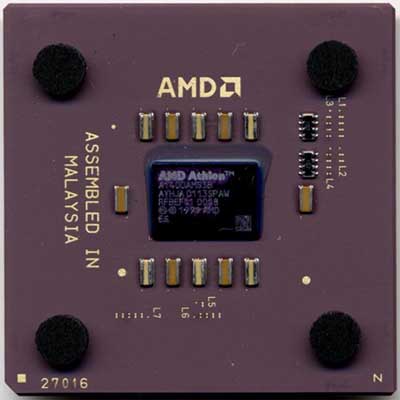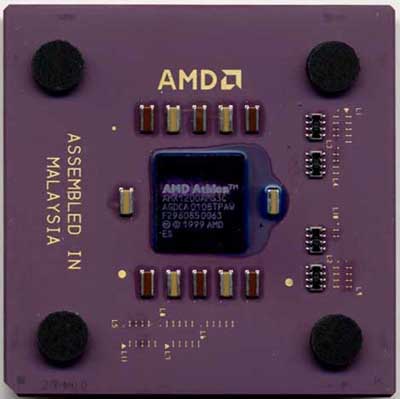The Technology behind Athlon 4
Now you know that the Athlon 4 we're talking about today is the same Athlon 4 you'll see three months from now in your desktop systems, let's talk about what makes it different. AMD put quite a bit of work into the Athlon 4 core using a lot of the knowledge they gained from optimizing the previous Thunderbird core.
Athlon (Thunderbird core)

Athlon 4 (Palomino core)

When designing a microprocessor you don't use the same type of transistors all over the core. The Athlon (Thunderbird) core had 37 million transistors of various types, but it was AMD's first shot at an Athlon core with an on-die L2 cache. The Athlon 4 takes the same Thunderbird core and further optimizes the core by using more optimized transistors for various portions of the core. When you are dealing with the 37.5 million transistors that make up the Athlon 4, such optimizations can result in quite a bit of power savings. According to AMD, these improvements to the Athlon 4 result in a 20% decrease in power use compared to an equivalently clocked Athlon using the Thunderbird core. The die size hasn't changed much either; a small increase from 120 mm^2 to 128 mm^2.
Part of this optimization process included a change in layout of the core which is why the Athlon 4 core does in fact look different than the older Athlon (Thunderbird) core. The change wasn't cosmetic; it was for further performance and power optimizations.
There are four new features that the Athlon 4 offers over its predecessor outside of the power reduction. Three of these features are performance enhancing and the remaining one is a mobile related feature.
Just to set the record straight now, the Athlon 4 does not have an improved Branch Prediction Unit as was originally rumored.










0 Comments
View All Comments